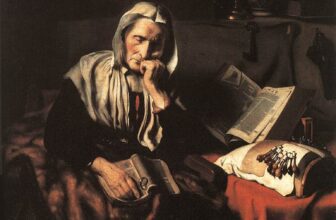
Napoleonic looting of art
The Napoleonic looting of art is one of the most significant and controversial episodes in the history of cultural heritage. During the late 18th and early 19th centuries, Napoleon Bonaparte embarked on a series of military campaigns across Europe and beyond, driven by ambitions of political domination and cultural supremacy. Among the many consequences of these conquests was the systematic plundering of art and artifacts from the territories Napoleon’s armies occupied. These objects were transported back to France, often under the pretext of enriching French culture and science, and many ended up in institutions such as the Louvre, which Napoleon envisioned as a universal museum.
Historical Context
The Napoleonic Wars, spanning from 1796 to 1815, were an era of unprecedented military and political upheaval. Napoleon, a product of the French Revolution, sought not only to expand the borders of France but also to propagate revolutionary ideals, though these ambitions were often overshadowed by his personal quest for glory. As Napoleon’s armies marched across Italy, Spain, Germany, and even into Egypt, they were accompanied by teams of scholars, artists, and officials tasked with identifying and cataloging cultural treasures for removal to France.
The practice of looting art was not entirely new. Conquerors throughout history, from the Romans to the Crusaders, had taken art and cultural artifacts as spoils of war. However, Napoleon’s approach was distinctive in its scale, organization, and ideological justification. Art was not merely booty but a tool of propaganda and a symbol of France’s cultural dominance.
Ideological Justifications
Napoleon and his supporters justified the looting of art through a combination of Enlightenment ideals and nationalistic rhetoric. They argued that France, as the epicenter of reason, science, and progress, was the rightful steward of humanity’s cultural heritage. The transfer of art to France was portrayed as a civilizing mission, intended to make these treasures accessible to a broader audience and to elevate the cultural consciousness of the French people.
This rationale was most evident in the creation of the Musée Napoléon, the predecessor of today’s Louvre Museum. The museum was designed to house the finest artworks from across Europe, consolidating them in Paris as a testament to French superiority. The “glory of France” was linked explicitly to its ability to collect, display, and interpret the cultural achievements of other civilizations.
Key Examples of Looting
Italy: The Rape of the Peninsula
Italy, with its rich history and unparalleled artistic heritage, was a primary target of Napoleonic looting. In 1796, following his victory at the Battle of Lodi, Napoleon issued the Treaty of Tolentino, which compelled the Papal States to hand over vast quantities of art. Among the most famous works taken were Raphael’s “Transfiguration,” the Laocoön Group, and the Apollo Belvedere. These masterpieces were transported to France and displayed in the Louvre.
The plundering extended beyond Rome to include cities such as Venice and Milan. Venice’s famous Horses of Saint Mark, four bronze statues that had adorned the Basilica of San Marco for centuries, were seized and shipped to Paris. Milan’s iconic “The Last Supper” by Leonardo da Vinci was almost taken, but its fragile condition saved it from transportation.
Egypt: The Rosetta Stone and Beyond
Napoleon’s Egyptian campaign (1798–1801) combined military conquest with a scientific expedition. Accompanying the army were scholars and scientists, collectively known as the Commission des Sciences et des Arts, who documented Egypt’s ancient monuments and artifacts. While the campaign ultimately failed militarily, it resulted in the removal of numerous antiquities, including obelisks, statues, and manuscripts.
Perhaps the most famous artifact associated with this campaign is the Rosetta Stone. Although it was ultimately taken by the British after Napoleon’s defeat, its discovery by French scholars during the campaign underscores the intersection of military and scholarly endeavors in Napoleon’s looting strategy.
Spain: The Disruption of Heritage
Napoleon’s invasion of Spain in 1808 led to widespread looting and destruction of cultural heritage. Spanish monasteries, churches, and private collections were pillaged, and artworks by masters such as El Greco, Velázquez, and Murillo were taken. Many of these works never made it to France, as guerrilla resistance and logistical challenges disrupted French efforts.
Germany and the Low Countries
In territories such as the Rhineland and the Netherlands, Napoleonic forces seized works by artists like Rembrandt, Rubens, and Van Eyck. The looting extended to libraries and scientific instruments, reflecting Napoleon’s broader interest in intellectual as well as artistic achievements. For instance, the University of Leuven’s library was stripped of its manuscripts and rare books, many of which were relocated to Parisian institutions.
The Aftermath and Restitution
The collapse of Napoleon’s empire in 1815 marked a turning point in the story of his looting. The Congress of Vienna, convened to restore European stability, also addressed the question of cultural restitution. The Duke of Wellington, among others, argued for the return of looted artworks to their countries of origin. This led to the partial dismantling of the Musée Napoléon and the repatriation of some treasures, including the Horses of Saint Mark to Venice and many Vatican artifacts to Rome.
However, restitution was incomplete. Many works remained in France, either because their origins were unclear or because they had been acquired through treaties that were technically legal under the laws of the time. This incomplete process has left a legacy of tension and unresolved claims.
Legacy and Ethical Questions
The Napoleonic looting of art raises enduring questions about the ethics of cultural heritage and the responsibilities of museums. On one hand, Napoleon’s actions contributed to the development of modern art history and museology. By bringing together works from disparate regions, he helped create a more interconnected understanding of artistic traditions.
On the other hand, the means by which these works were acquired, through coercion, violence, and exploitation, cast a long shadow. Many of the arguments Napoleon used to justify looting, such as the idea of cultural superiority or the civilizing mission, have been echoed in later instances of cultural imperialism. The ongoing debates over the restitution of artifacts from colonial contexts often draw parallels to the Napoleonic era.
The Napoleonic looting of art was a phenomenon of immense complexity, shaped by the interplay of military ambition, cultural aspiration, and ideological conviction. It left an indelible mark on the cultural landscape of Europe, enriching France while impoverishing other nations. While some of the looted treasures have been returned, many remain in French collections, serving as a reminder of a tumultuous period in history. As contemporary debates about cultural restitution continue, the Napoleonic example provides a crucial historical lens through which to examine the ethics of art acquisition and the responsibilities of global cultural institutions.




